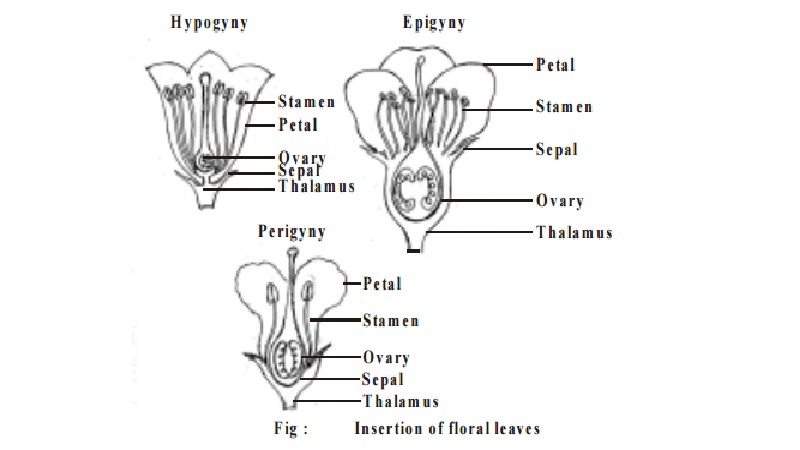Chapter: 11th 12th standard bio Biotany Plant Tree higher secondary school
The receptacle (thalamus) : Variation of the Receptacle, Insertion of floral leaves on the thalamus

The receptacle (thalamus)
The thalamus is the short floral axis, with compressed nodes and internodes on which various floral leaves are inserted.
Variation of the Receptacle
In a few cases, internodes become distinct and elongated. The elongated internode between the calyx and corolla is theanthophore as in Caryophyllaceae.
The internode elongated between the corolla and the androecium is called the androphore eg. Passiflora (family - Passifloraceae).
The elongated internode between the androecium and the gynoecium is called the gynophore as in Capparis [Capparidaceae] When both androphore and gynophore are present, they are called gynandrophore or androgynophore e.g. Gynandropsis. When the thalamus is prolongated beyond the ovary, it is called the carpophore as in the Coriander, Foeniculum etc.
Insertion of floral leaves on the thalamus
Hypogyny
When the thalamus is convex or elongated, the carpel occupies the top most position on it. The other floral members (sepals, petals, and stamens) are placed below them. This mode of arrangement is called hypogyny. The flower is described as hypogynous. The ovary is known as superior. eg. Malvaceae, Annonaceae etc.
Epigyny
When the thalamus is cup shaped, the lower part of the ovary is situated at the bottom of the cup and also fused with the inner wall of thalamus. The other floral members appear to be inserted upon the ovary. This mode on arrangement is called epigyny. Then the flower is said to be epigynous. the ovary is said to be inferior. eg. Asteraceae, Cucurbitaceae, Rubiaceae etc.
Perigyny
In this condition, the receptacle is flat or slightly cup-shaped. The carpels are situated at its centre and other floral members are inserted on its margin. This mode of arrangement is called perigyny. The flower is known as perigynous. In this case, the ovary is still described as half inferior. eg. Fabaceae, Rosaceae etc.
The Perianth
Most flowers of monocot plants have perianth, where there is no difference between calyx and corolla. In families of monocotyledons, the perianth is brightly
coloured and highly developed, which is known as Petaloid perianth as in Gloriosa superba. Some families of dicotyledons have also petaloid perianth e.g. Polygonaceae.
The function of the perianth leaves is to protect the inner part of the flower. When brightly coloured, they attract insects for pollination.
Related Topics